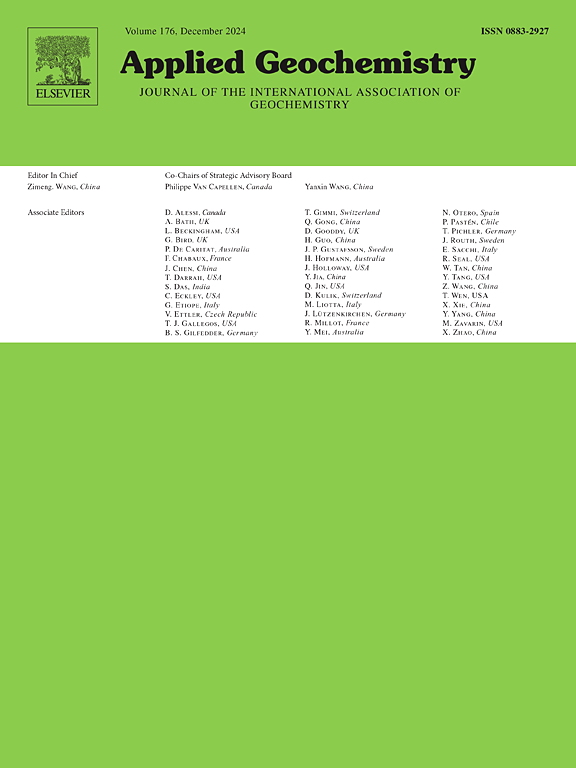Geochemical characteristics of borehole cores and their indicative significance for gas hydrates in the permafrost area, Qinghai-Tibet Plateau
IF 3.1
3区 地球科学
Q1 GEOCHEMISTRY & GEOPHYSICS
引用次数: 0
Abstract
The formation of gas hydrates in the permafrost zone of the Tibetan Plateau is complicated, so it is difficult to achieve significant breakthrough in gas hydrate exploration. In this paper, we compare the geochemical anomalies in different drill holes, with a view to elucidating their indicative roles in migration and accumulation of gas hydrate and hydrocarbon. The results demonstrate that the acidysis hydrocarbon and fluorescence spectra of the borehole in the discovered hydrate area show obvious enrichment characteristics, with significantly higher anomaly intensity than that in the borehole where no hydrate samples are found. The geochemical anomalies have obvious response characteristics with the cracks or fracture zones. The hydrocarbon genesis analysis indicates that the dominant cause is pyrolysis. The anomalies of acid hydrocarbon methane, methane carbon isotopes and fluorescence spectra can be used as indicators of natural gas hydrate and its transport and aggregation. The effective time and space configuration of the reservoir elements including gas source, migration and concentration, and permafrost conditions is crucial to the eventual formation of natural gas hydrate in the study region. The research can lay a foundation for future gas hydrate exploration in the Tibetan Plateau permafrost region.

青藏高原多年冻土区钻孔岩心地球化学特征及其天然气水合物指示意义
青藏高原多年冻土带天然气水合物成因复杂,天然气水合物勘探难以取得重大突破。通过对比不同钻孔的地球化学异常,阐明其在天然气水合物和油气运移聚集中的指示作用。结果表明:水合物发现区井眼的酸解烃和荧光光谱具有明显的富集特征,异常强度明显高于未发现水合物井眼。地球化学异常与裂缝或破裂带有明显的响应特征。油气成因分析表明,热解是主要成因。酸性烃甲烷异常、甲烷碳同位素异常和荧光光谱异常可作为天然气水合物及其输运聚集的指示物。气源、运移、富集等储层要素的有效时空配置以及多年冻土条件对研究区天然气水合物的最终形成至关重要。该研究可为今后青藏高原多年冻土区天然气水合物勘探奠定基础。
本文章由计算机程序翻译,如有差异,请以英文原文为准。
求助全文
约1分钟内获得全文
求助全文
来源期刊

Applied Geochemistry
地学-地球化学与地球物理
CiteScore
6.10
自引率
8.80%
发文量
272
审稿时长
65 days
期刊介绍:
Applied Geochemistry is an international journal devoted to publication of original research papers, rapid research communications and selected review papers in geochemistry and urban geochemistry which have some practical application to an aspect of human endeavour, such as the preservation of the environment, health, waste disposal and the search for resources. Papers on applications of inorganic, organic and isotope geochemistry and geochemical processes are therefore welcome provided they meet the main criterion. Spatial and temporal monitoring case studies are only of interest to our international readership if they present new ideas of broad application.
Topics covered include: (1) Environmental geochemistry (including natural and anthropogenic aspects, and protection and remediation strategies); (2) Hydrogeochemistry (surface and groundwater); (3) Medical (urban) geochemistry; (4) The search for energy resources (in particular unconventional oil and gas or emerging metal resources); (5) Energy exploitation (in particular geothermal energy and CCS); (6) Upgrading of energy and mineral resources where there is a direct geochemical application; and (7) Waste disposal, including nuclear waste disposal.
 求助内容:
求助内容: 应助结果提醒方式:
应助结果提醒方式:


